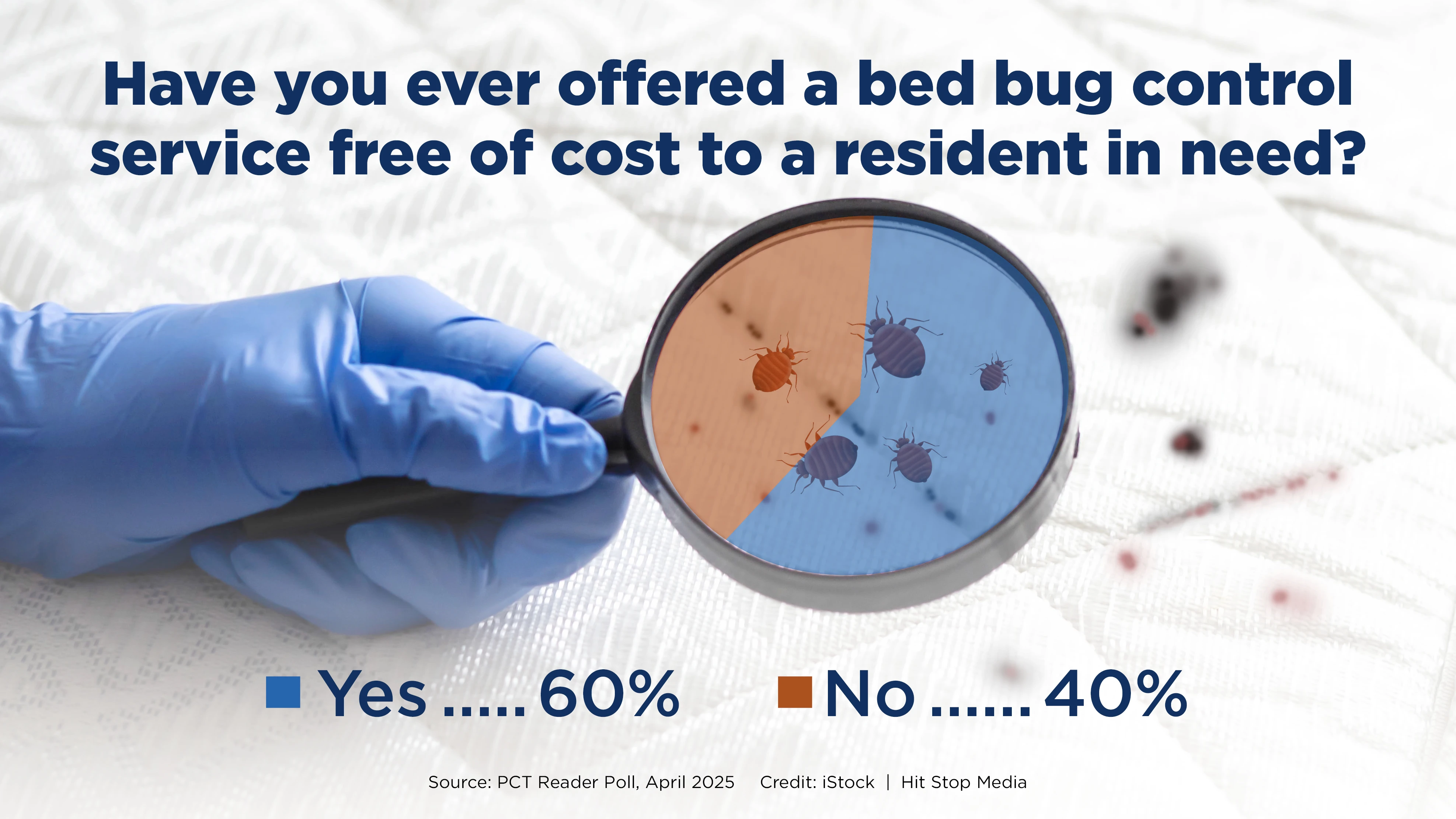The house mouse has been dubbed by some scientists as the “second most successful mammal on Earth.” It also represents the most important rodent pest in the United States. Various industry surveys have estimated that house mouse control programs alone account for about 68 percent of all rodent work performed. But despite all the money, efforts and expertise directed toward controlling the mouse, it survives. In fact, it thrives for the following reasons:
WIDE RANGE OF HABITATS. The house mouse has been described as a “mammalian weed” because it is so adaptable to many different conditions and is capable of inhabiting many different areas. It has the widest distribution on the planet of any mammal, second only to humans. The house mouse occupies all the major landmasses on Earth and most of the minor ones. It inhabits cold islands near Antarctica, tropical isles in the Caribbean, open cold tundra, dry hot deserts and salt marshes. It exists in coal mines 1,800 feet below the surface, as well as 15,000 feet above sea level, high up in the Andes Mountains. Inside urban structures, house mouse infestations have developed in heating ducts in the upper stories of tall skyscrapers, as well as within frozen meat lockers at temperatures of -10° C.
SMALL BODY SIZE. The mouse is able to enter buildings and rooms through small openings that larger rodents cannot. Once inside, it requires very little space, and can occupy literally hundreds of structural spaces, equipment voids and appliances. Its small size also enables it to be overlooked and transported inside many delivery boxes and items.
SECRET SPECIALIST. Most mice living in buildings are active when people are inactive — during the night or at other times when human activity is minimal. Moreover, when the mouse is active, it moves quickly and quietly. This “cryptobiotic” behavior, combined with its small size, helps explain why new infestations often go undetected until there are numerous mice.
HIGH REPRODUCTIVE POTENTIAL. Inside most occupied buildings, where foods may be accessible, the mouse has an impressive potential for producing a high number of offspring in a relatively short period of time. And as long as materials are available for constructing nests, mice can reproduce under seemingly impossible conditions, such as within frozen meat lockers.
OPPORTUNISTIC FEEDER. The house mouse is an opportunist and will feed on a wide variety of foods found inside human dwellings. Should one food disappear, the mouse will readily switch to whatever is available.
SMALL TERRITORIES. The average home range of house mice comprises a 10- to 30-foot radius from their nest. But when good harborage and abundant food resources exist, the home ranges become even shorter — in some cases only a couple of feet in any direction. In warehouses and supermarkets, mice may not even leave the pallet of food they are nesting in.
A COMPULSIVE EXPLORER. The house mouse constantly explores its environment, gathering information about the location of other mice, food, water, nesting sites and places to hide from predators. In this way, the mouse eventually can locate the best available habitat.
VARIABLE BEHAVIOR. The behavior patterns of the house mouse often have been referred to as “unpredictable.” Variations exist in mouse behavior according to different mouse populations and their specific environments. For example, mice in certain commercial accounts may not enter multiple traps or avoid dangerous surfaces such as glue traps.
HUMAN TOLERANCE. Finally, people’s attitudes toward the house mouse contribute toward its successful co-existence with humans. Walt Disney created the lovable Mickey Mouse, which is still one of the most popular children’s attractions the world over. A long list of other mouse stories, children’s books and other television cartoons portray mice as cute and lovable animals or heroes.
Consequently, a positive (or at least tolerant) attitude toward mice is developed by many people early in their life. This attitude, in addition to the mouse’s small size (i.e., “it’s just a little mouse”), results in people not prioritizing total mouse eradication in urban environments. The few surviving mice of extermination programs constantly replace killed mice, resulting in years and years of chronic mouse populations co-existing with humans in cities, towns and farms. As a result, house mice continue — and will continue — to thrive throughout the United States.
The author is president of RMC Consulting, Richmond, Ind.
Editor's Note: This column was excerpted from Bobby Corrigan’s book “Rodent Control: A Practical Guide for Pest Management Professionals.”
To order, visit www.pctonline.com/store or call 800/456-0707.
WANT MORE?
Enter your email to receive our newsletters.

Explore the April 2008 Issue
Check out more from this issue and find your next story to read.
Latest from Pest Control Technology
- Target Specialty Products, MGK Partner for Mosquito Webinar
- Cockroach Control and Asthma
- FORSHAW Announces Julie Fogg as Core Account Manager in Georgia, Tennessee
- Envu Introduces Two New Innovations to its Pest Management Portfolio
- Gov. Brian Kemp Proclaimed April as Pest Control Month
- Los Angeles Ranks No. 1 on Terminix's Annual List of Top Mosquito Cities
- Kwik Kill Pest Control's Neerland on PWIPM Involvement, Second-Generation PCO
- NPMA Announces Unlimited Job Postings for Members






